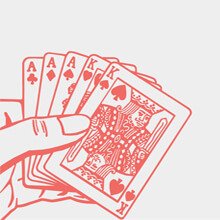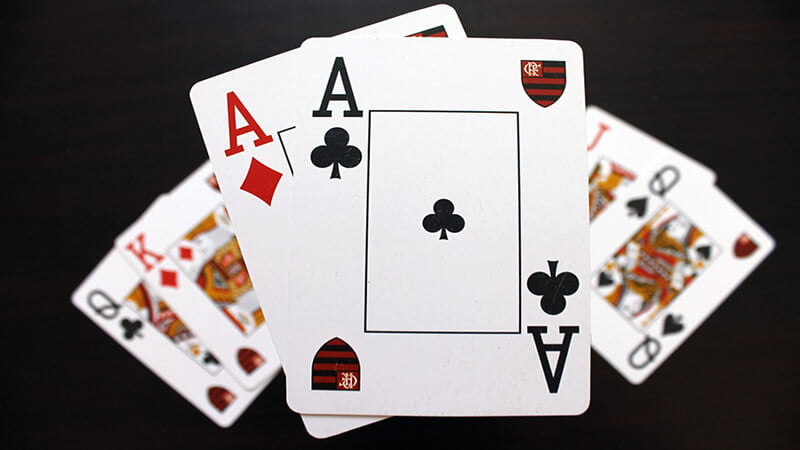
Bullies at the Poker Table
- This kind of aggressive can through your whole game out of kilt
- Poker bullies can force you to go on tilt
- Control your emotions and avoid the trap of going on full-blown tilt
It’s potentially one of the most frustrating, enervating, tilt-inducing situations in poker; playing bullies at the poker table. In hand after hand after hand, the bully will bet, raise, and re-raise almost everything in sight, essentially forcing you to hold good cards if you want to stay in the pot. Of course you usually won’t have a good hand, and even though you know in your heart the bully is betting at you with bupkus, you have bupkus too, and there’s just no way you can call a large bet with nothing, so you’re compelled to fold, and fold, and fold again…while he keeps raking in pot after pot, with what you know must be mediocre cards. Moreover, you’ll rarely be able to draw for straights or flushes or anything else for that matter, because the bullies at the poker table make it too expensive. For the majority of players, having a poker bully at your table forces you out of your comfort zone, throws your game plan out of whack, and in a worst-case scenario, can put you on full-blown tilt.
Unfortunately, that worst-case scenario is all too common, especially when the table bully also happens to be catching great cards, steamrolling the entire table on a hyper-aggressive rush. For the table bully, the primary benefit of his playing style is the ability to steal a lot of pots through sheer aggression, but a crucial secondary benefit is the proclivity of his opponents to go on tilt. You see it time and time again, one of the bullies at the poker table opponents gets fed up, and decides that it’s time to play sheriff. He starts calling the bully down (or even raising him) with marginal hands. And of course, these are the times when the bully actually has something at the showdown (usually because he caught some miracle card on the river), which of course makes Mr. Sheriff even more frustrated and crazy and determined to “get” the table bully.

Bullies at the Poker Table can Control the Entire Game
So, the first step in dealing with the bullies at the poker table is simply to avoid falling into this sort of trap, and this really just comes down to plain old-fashioned emotional control at the poker table. Don’t let the game degenerate into a childish whose-is-bigger battle of egos. In short, you going to have to let the table bully run over you sometimes. Patience is the first and most important key. Yes, you want to play back at him, but you’ll also have to pick your spots carefully. Wait for good cards, try to stay away from drawing hand, and then once you’ve got something, play aggressively. Perhaps even try to trap him, let him bluff off his chips to you — that’s always a great feeling. What you don’t want to do is keep calling him down with hands like ace-high, just because you’re convinced he’s always betting with junk. It’s perfectly natural and understandable that you’ll lose respect for the bully’s bets and raises, but at the same time you cannot assume that he is always betting with junk. Even bullies at the poker table get good cards sometimes.
Of course the main difficulty lies in trying to figure out when the bully actually has something, and when he is betting (yet again) with junk. Bullies are very hard to read, precisely because they tend to bet the same way all the time. If you can get some sort of read on him, discern any variations in his betting patters — the most noteworthy being any time when he doesn’t bet or raise, this should always raise a red flag in your mind — then that would be ideal. But failing that, you’ll have to wait for a good hand, push your chips into the middle of the table, and just hope that your hand holds up at the showdown. In short, when playing against a bully, you’re going to have to gamble a little bit. Take calculated risks. You cannot be afraid to lose against him. Play tight preflop, and then get aggressive post-flop when you manage to hit something.
It’s also worth mentioning that you can never assume that just because this person is a bully, therefore he must also be a bad player. Some table bullies are very skilled indeed; they are quite adept at sizing up the table and knowing exactly which players they can push around, and when. If you’re up against one of these skilled bullies, your best course of action may very well be to just try and stay out of his way. Stupid bullies are another story altogether, of course.
One of the few perks of playing poker against a bully is that his hyper-aggressive play tends to throw everybody at the table off their game. The ones who aren’t tilting by playing back at the bully with crappy cards will likely be tilting the other way, by playing much too timid and conservative. Now, when you do enter the pot, it should be easier for you to push those players around and maybe even control the betting.
Finally, your position at the table in relation to the bully should always be a very critical factor in your anti-bully game plan. If he is to your right, you must tighten up considerably. Wait for those high-quality cards, and then raise his bet, to hopefully knock out players behind you and isolate the bully. If you can get the pot heads-up, this should put you in a great position to win the hand, since your starting-hand standards are so much stricter than his. Alternatively, when you have a starting hand that plays well multi-way (such as a small pair), you can just call along, hoping for more callers behind you (keep in mind, probably nobody else at the table respects the bully’s bets and raises either). If the bully is to your left, then you’ll get the benefit of seeing what everybody else at the table does in response to him, before it’s your turn to act. In a very real sense, the bully is effectively “the button” most of the time, since other players tend to defer to him no matter what the actual betting order. If you can just be patient and play smart, solid poker, this is one more element that you can use to your advantage when the time is right.